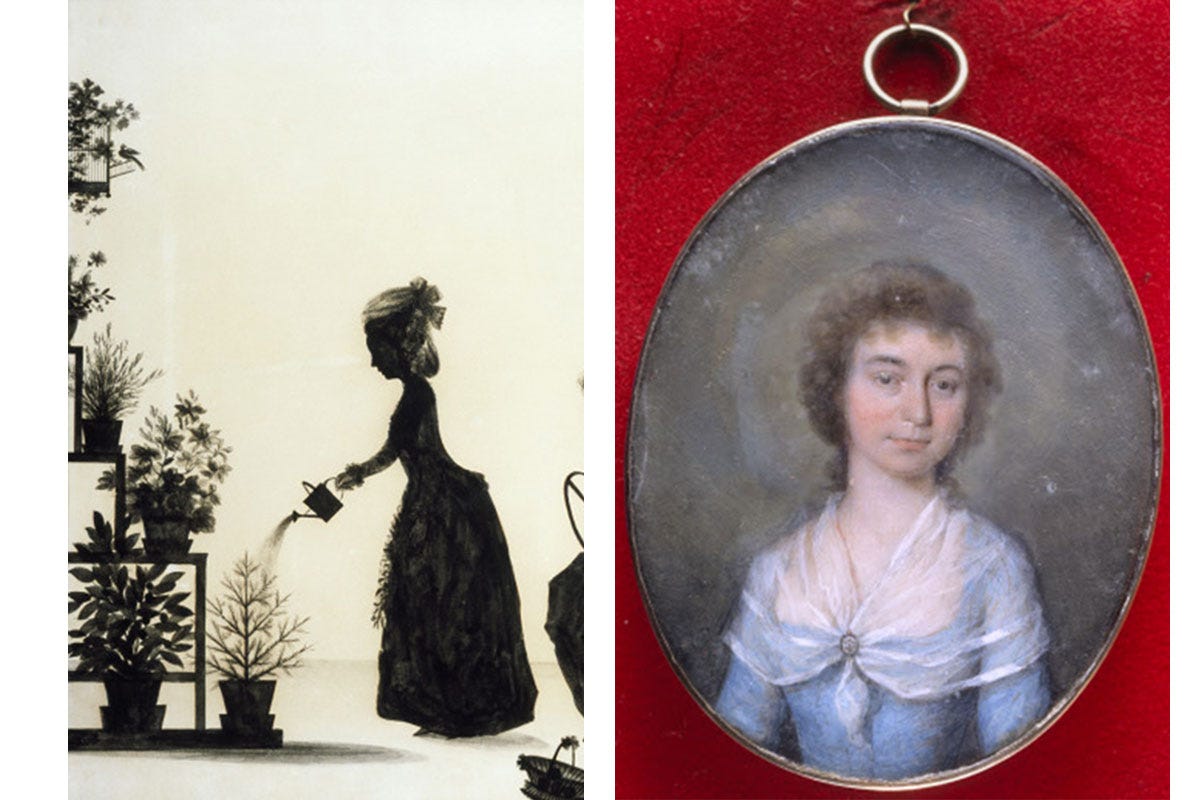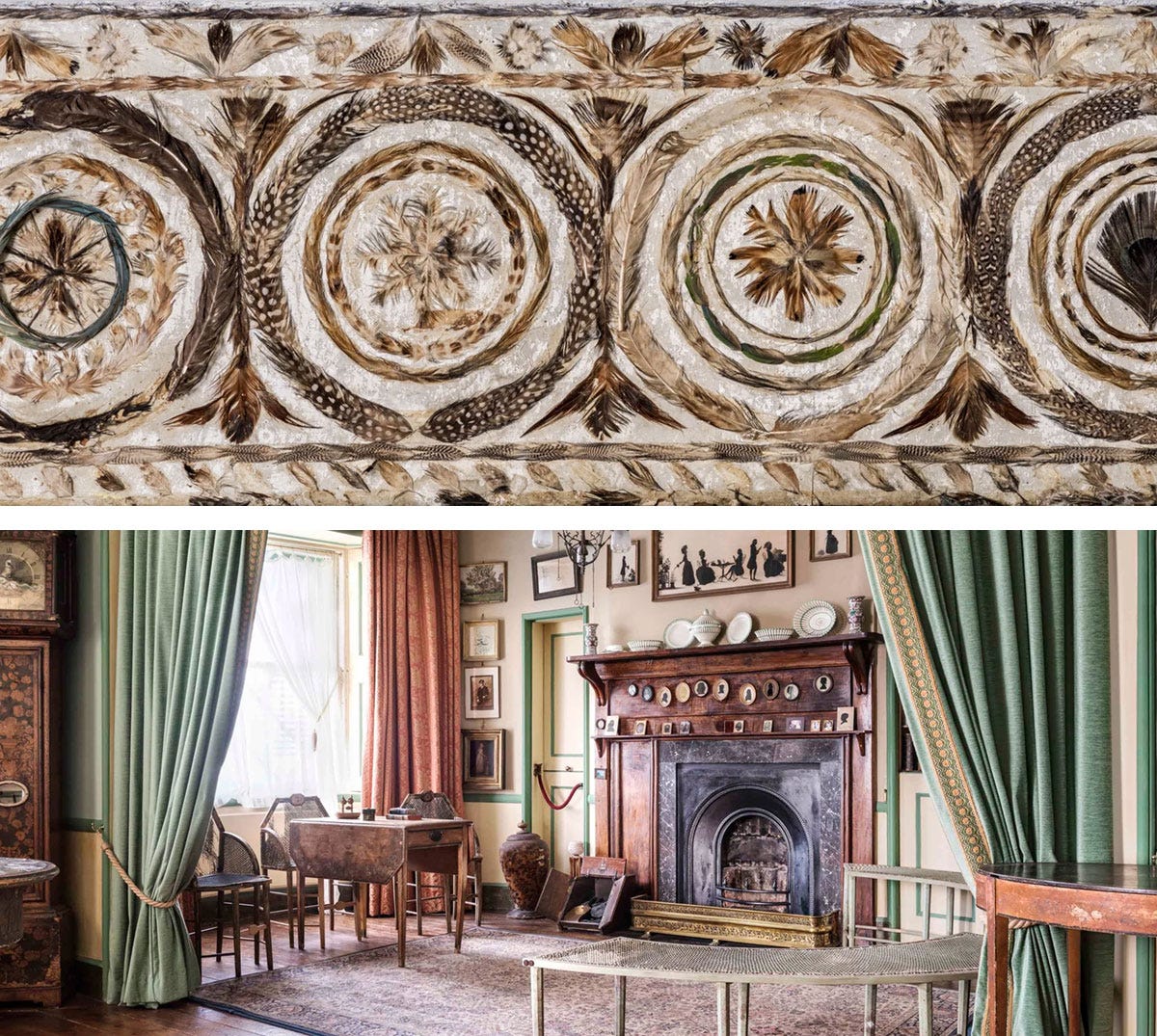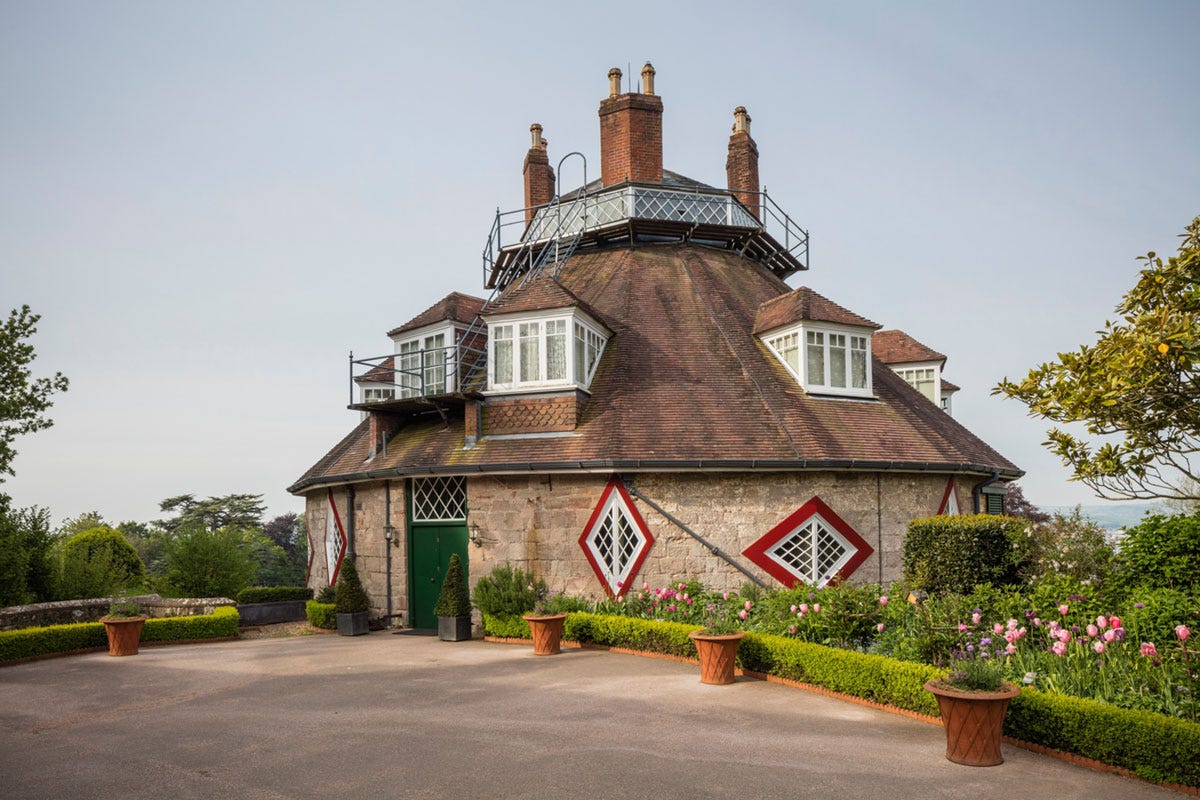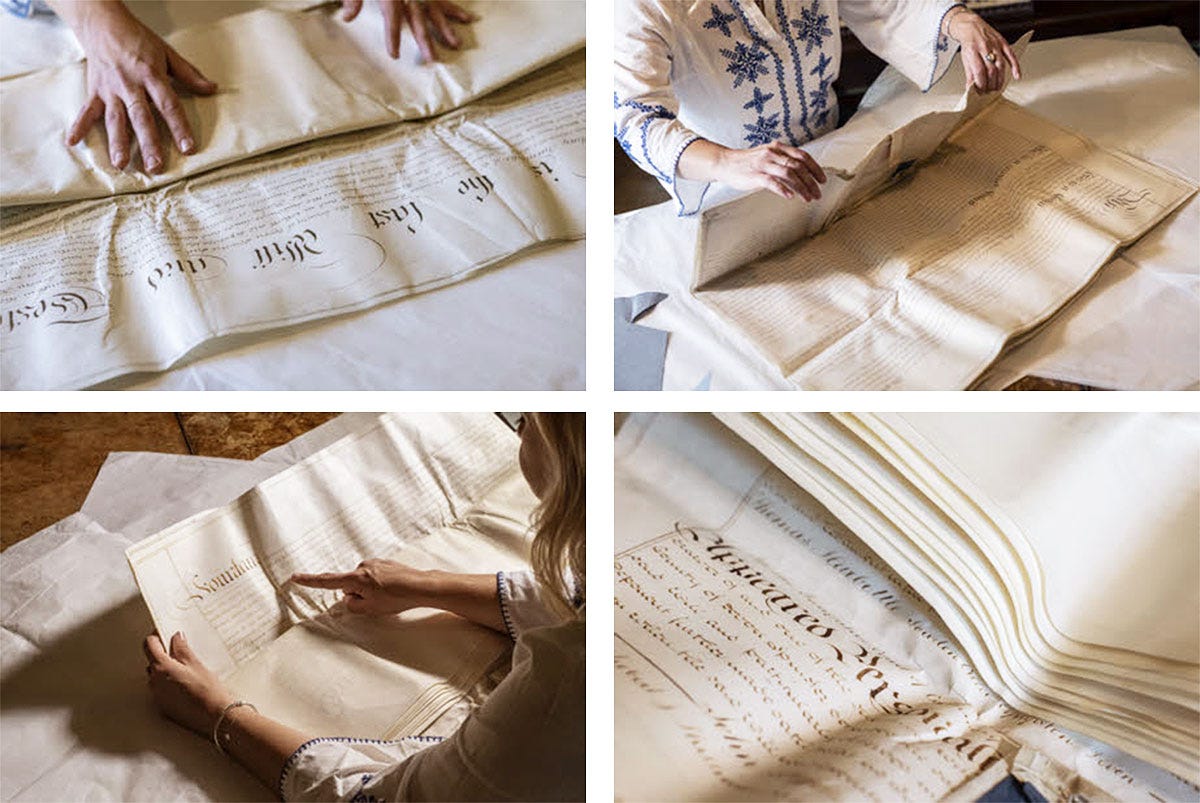The cousins who built a women-only community and centuries-long legacy
Most historic homes represent patrilineal expressions of wealth; A la Ronde is a matrilineal expression of creativity.
In 1784, cousins Jane and Mary Parminter set off on an almost-10-year grand tour of Europe. The pair – aged around 34 and 17 at the time – had both lost their parents when they were young and inherited substantial wealth. This afforded them a level of freedom, both from responsibility and convention. They travelled unescorted by men, and as well as visiting sites of great art, architecture, and antiquity, they did things like climb mountains. Indeed, they were the first women to ascend Mont Buet, a 3,000m peak in the French Alps which is colloquially known as ‘Parminter Peak’ and ‘Ladies’ Mont Blanc’.
But they didn’t just collect experiences and mementos on their travels, they collected ideas. After they returned to the UK, they designed A la Ronde, a unique hexadecagonal (16-sided) home with an octagonal room at its centre, likely inspired by the Byzantine Basilica de San Vitale in Italy.
In 1796 they bought a plot of land in Exmouth, southwest England, to make their vision a reality.
The exterior of the building is studded with diamond-shaped windows designed to catch the sunlight as it moves across the sky throughout the day and there are multiple internal nooks which feature fold-down seats and books. Below the roof is a 360degree gallery completely decorated in shells, which can be viewed from the central octagonal room below, which has eight rooms, behind eight identical doors, leading off it. In the evenings, when the octagon would have been lit by candlelight, looking up to the Shell Gallery created the sensation of being in an underwater world. The drawing room features 27m of featherwork frieze, and the overall design scheme includes repeating patterns, particularly of diamonds and chevrons. Where a traditional male-owned house would have a cockerel weathervane, the Parminters’ features a dove, which is mirrored inside by another dove suspended from the ceiling, with an olive branch in its mouth, symbolising peace.
A la Ronde was set in a 28acre estate, within which the Parminters also commissioned alms houses for older women and a non-conformist chapel, set up a lace-making business and a small school for girls, and planted orchards and a cottage garden.
“These were women who did things differently,” says Emma Mee, a Project Manager at the National Trust, which has been caring for A la Ronde since 1991, where she’s been based for the past two and a half years.
“They were quite dynamic, modern women. They designed a self-sufficient women-only community which also has a sense, for me, of social justice and female expression.
“How do women express themselves at a time when women’s words aren’t heard? When the female experience is limited to being the property of someone else and the only way of elevating yourself is through marriage? They did it through their deeds. They did it through craft and creativity. They deliberately chose another way of elevating themselves. And they were altruistic, they created opportunities for other women, too.
“There’s no other property like A la Ronde,” Mee says. “The typical National Trust property is a patrilineal story of men’s inherited wealth. This is a matrilineal story of women showing off their creative interests, expressing themselves through craft.”
Unfortunately, there is no evidence of the motivations behind the Parminters’ unique brand of expression. Jane’s travel diary, which was held at the Exeter Records Office for safe keeping, was destroyed by bombing in World War Two, and A la Ronde doesn’t have a significant archive.
But Mee thinks “it’s good to not have a definitive answer because it starts conversation”.
“There’s a gap in the fabric of the narrative that you can stitch with your own experience, and I think that’s why people like visiting. Because there isn’t an answer, everyone’s got an equally valid claim to what’s stitched into the middle.”
She says theories range from religious affiliation to single sex spaces, and a general rejection of traditions of male/female marriage, and building methods of the period.

But where there is no doubt about the Parminter cousins’ intentions is what was to happen to A la Ronde, and their money, after they were gone. Mary, who lived until 1849 (Jane died in 1811), left an exacting will.
“The will is so interesting. It’s a huge document made of vellum and it’s very precise. You can hear her voice very clearly in it,” Mee says.
It stipulates that the property should not be changed in any way and that it should only be passed down to unmarried, single women. Elsewhere, in reference to financial bequests, it insists the money should be put directly in the hands of the women beneficiaries, and not controlled by their husbands.
The matrilineal succession was broken only once in over 200 years, when the woman next in line to inherit got married and her brother, Reverend Oswald Reichel, a priest attempting to escape some controversy, moved in. Incidentally, he was the only resident who made substantial changes to A la Ronde – widening rooms and installing new technology such as speaking tubes, central heating, and dumb waiters – but Mee believes we “shouldn’t villainise him” for it. Looking on the bright side, she says that if he hadn’t swapped out the thatched roof for tile, the house’s unique Shell Gallery might not have survived the harsh coastal elements of Exmouth.
And it’s the hand-crafted features of A la Ronde, such as the Shell Gallery, which both attract visitors and provide potential for further research into the Parminters, ‘women’s work’, and the social conventions (and rejection thereof) of their time. Mee says: “There’s lots of layers to this place.”

Unfortunately, its small size, and conservation considerations, means the house is not as accessible as it could be – visitors can’t actually enter the Shell Gallery, for example. The project Mee has been working on for the past two and a half years has been concerned with conservation and alternative ways of engaging the public with A la Ronde and its unique creative features. Her team has meticulously re-installed shells that have fallen off the gallery walls over the years (which themselves have been meticulously collected and stored, and their original position recorded), and cleaned and secured everything else still on the walls. They’ve also created an online virtual tour of the gallery, and commissioned artist Monica-Shanta to create a ‘homage’ to the shellwork – which visitors can get up close and hands on with – in the new Room of Discovery.
They also hosted an academic conference, The Symposium, over the summer which focused on the Shell Gallery and the house’s featherwork.
“Elizabeth Montague, the Queen of the Bluestockings, spent 10 years decorating a room with feathers,” Mee says. “Lots of women used feathers as a means of expression, but none of those works survive because they’ve been eaten by pests over many years.
“The conference was really a call out to say: ‘we’ve got some of the only surviving female featherwork, does anyone want to come and research it with us?’.”

There are other tantalising clues that warrant further investigation, too. Such as a series of watercolours in the Shell Gallery. Only one of them is signed – by Sarah Scott – but they’re all so stylistically similar that Mee suspects they may be by the same hand. Is it the same Sarah Scott who was the younger sister of Elizabeth Montague, who was a writer and social reformer, and who authored (and created artwork for) the 1762 novel, ‘Millennium Hall’, about a utopian women-only community?
Mee says: “There’s so much research that we would love to do, but resources are stretched and operational tasks are our priority.
“A la Ronde is such a curious place, with very curious features, and there’s still lots of secrets and stories left to discover.”











Fascinating.
Amy- These are stunning. Thank you for introducing me to A La Ronde. I love the panorama shell gallery overlooking the outside. Makes me imagine what I would like to use that space if given the opportunity. Beautiful!